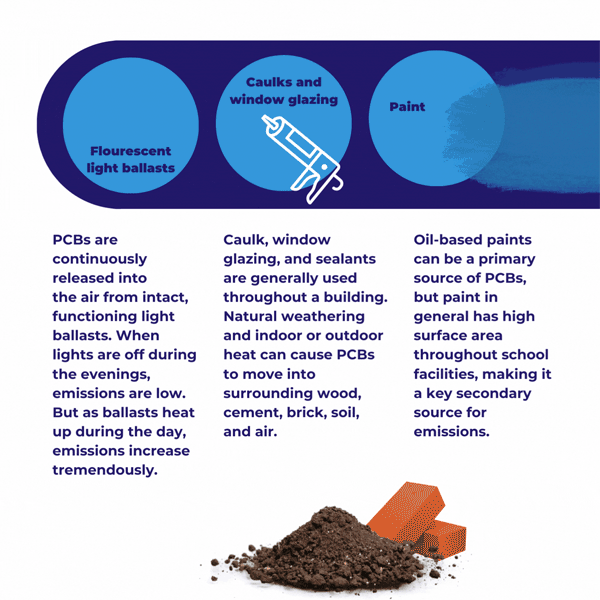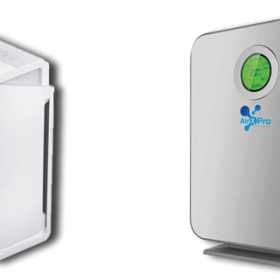PCBs in US SCHOOLS, WHY THE DANGER LINGERS
PCBs were domestically manufactured for construction materials in the United States beginning in about 1930 until 1979, a time period that coincides with a boom in school construction to meet the demands of post-war birth-rate growth. This increases the vulnerability of any school built or renovated before 1979.
Although the U.S. Environmental Protection Agency banned the manufacturing of PCBs over 40 years ago, PCBs are still of concern for school building because:
- The durability of applications means that schools that were built or renovated before 1979 may still have PCBs used in a variety of applications like caulking, sealants, coatings, and electric components.
- PCBs migrate, vaporize, and absorb into other materials and can be stored in our bodies for a long time, so prolonged and sustained exposure has a cumulative affect.
- Studies show high-dose exposures can diminish learning, growth, immunity, and present other health hazards.
- Primary sources of PCB emissions in older school buildings
- Factors that made PCBs attractive in construction applications also make them a pervasive enduring contaminant in a school building. Multiple primary sources of emissions, seen in the diagram below, are possible in any building, impacting the air quality in a facility.
PCBs move and transfer, creating secondary sources for harmful emissions
Heat and weathering creates conditions where PCBs transfer, move, evaporate, and absorb into the surrounding environment which creates secondary sources for PCB emissions. Secondary sources include classroom furnishings, rugs, paper, paint, dust, and any classroom material that can absorb and then also emit PCBs. These secondary sources can result in continuing exposures even after the removal or remediation of primary sources.
Prolonged and routine exposure is problematic for building occupants
The durability of PCBs is impacted by natural weathering, heat, and they can even be released when schools try to dismantle and remove sources. Exposure can happen through inhalation, direct skin contact, and ingestion.
Since we know that humans store PCBs in their bodies, prolonged and routine high exposure is problematic.
PCB exposure is associated with a range of toxic responses from skin rashes to impacting cardiovascular, gastrointestinal, immune, musculoskeletal, or neurological systems. But particularly troubling for schools is that high-level PCB exposure can have long-term affects on development and learning.
Studies show that high levels of exposure may lead to:
- Cancer, including non-Hodgkin’s lymphoma
- Skin lesions or rashes
- Depression
- Nausea
- Vomiting
- Abdominal pain
- Headaches
- Dizziness
- Reproductive disorders
- Higher susceptibility to pneumonia and viral infections
- Impaired memory, vision, and attention span
- High blood pressure
- Diabetes
- Neurological and development delays for young children and children exposed in utero
- Weight gain or weight loss in children born to women who are exposed
Spotlight on three common sources of PCBs
Below, see the behaviour of three prevalent sources of emissions that are typical for a school building.
Inhalation is responsible for the majority of the exposure that could occur in schools
PCB’s evaporate slowly at room temperature, but vaporize rapidly with the rise of temperatures due to weather, heating, or utilization of equipment or lights. The vaporizing process creates inhalations hazard that can be magnified by poor ventilation and dusty environments. Improving air quality is a key first step in reducing PCB concentrations.
UK SCHOOLS
If you have any queries, email pcb-enquiries@environment-agency.gov.uk or phone the Environment Agency on 03708 506 506 and ask ‘to discuss the PCB regulations’.






Leave a Reply
Want to join the discussion?Feel free to contribute!